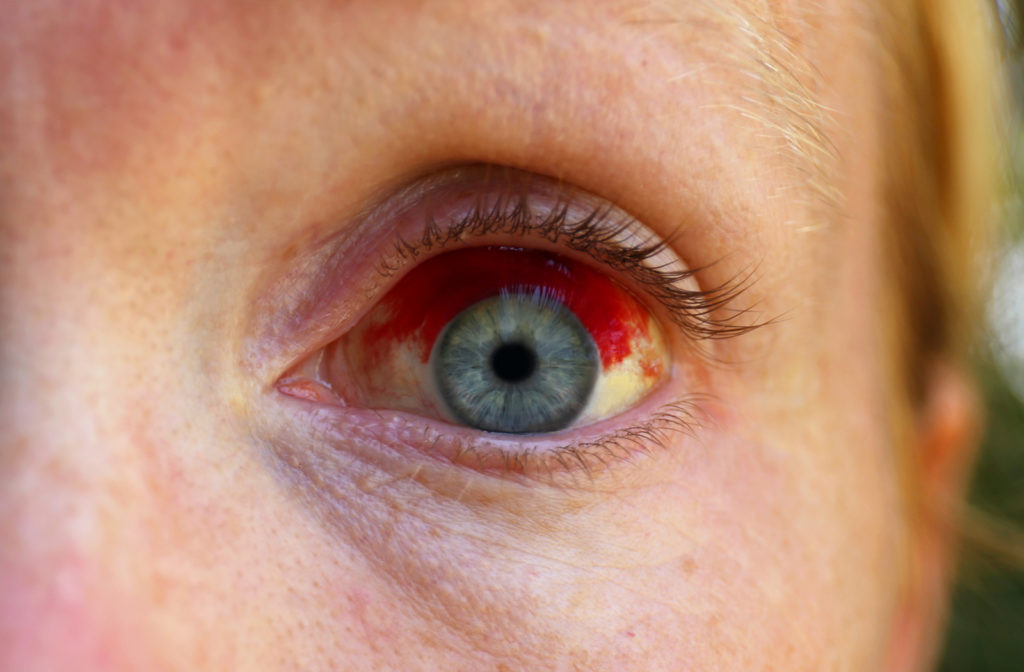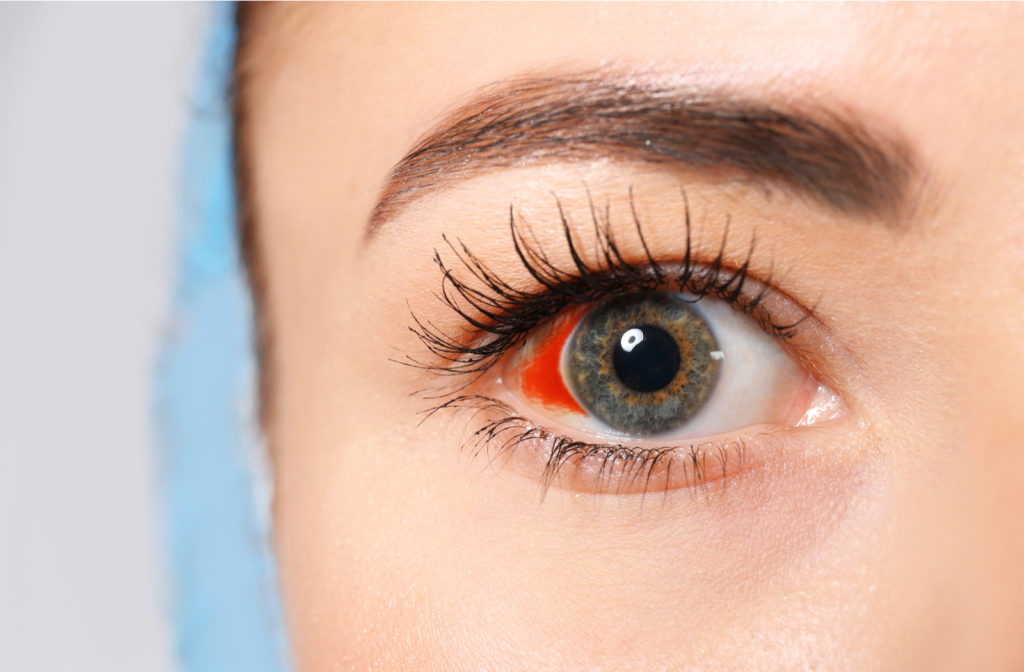Your vision is a key part of your overall quality of life. Maintaining consistency with eye exams and uncovering any potential eye care issues is essential to preserving that quality of life.
Naturally, if anything out of the ordinary occurs with your eyes, that can cause concern. Something like broken blood vessels can be one of those out-of-the-ordinary eye issues.
Let’s explore what causes broken blood vessels in your eye and if it’s dangerous.
What Causes Broken Blood Vessels in Your Eye?
Broken blood vessels in your eye, otherwise known as a subconjunctival hemorrhage, occur when a tiny blood vessel breaks beneath the clear surface of your eye. The clear surface of your eye can’t absorb the blood quick enough—so the blood gets trapped.
You may not even feel or realize your broken blood vessel issue until you see yourself in the mirror. The main symptom of a broken blood vessel in your eye is all visual in the form of a bright red patch on the white of your eye. The red spot on your eye can vary in size, but it will appear that blood has burst onto the white of your eye.
You may be wondering why the blood vessel in your eye has burst. There are various causes of broken blood vessels in your eye, and many are unknown—causes can include:
- Accidental injury
- Surgery
- Eyestrain
- Forceful sneezing
- Strong coughing
- Eye infections
- Vitamin C deficiency
Broken blood vessels in your eye are a common condition that can occur at any age and are equally common for all sexes and races. However, the risk of experiencing this type of bleeding increases as you get older.
Some risk factors include:
- Diabetes
- High blood pressure
- Certain blood-thinning medications
- Blood-clotting disorders
Now that you know what can cause broken blood vessels in your eye let’s explore if it can be dangerous.

Can Broken Blood Vessels in Your Eye be Dangerous?
While the appearance of a broken blood vessel in your eye can be concerning, it often occurs without doing any obvious harm to your eye and is not dangerous. In most cases, you won’t even notice it.
Health complications from broken blood vessels in your eye are rare and just look worse than it is. Your optometrist will be able to diagnose your condition right away and follow up to ask about your overall health.
The follow-up will consist of your doctor determining if you have a bleeding disorder through a blood test. This test ensures you don’t have more complicated future issues with broken blood vessels in your eye.
Prevention Methods
Preventing broken blood vessels in your eye entirely is not always possible—it can help to avoid medications that increase your risk of bleeding.
Practicing good eye care methods can help combat the risk of bleeding, including:
- Avoid rubbing your eyes
- Flush your eyes with your own tears or artificial tears
- Always wear protective goggles to avoid getting particles in your eyes
Usually, treatment is unnecessary, and the condition
The condition will usually resolve itself within 7 to 14 days. Throughout the healing process, you may notice a change in your eye’s appearance. This change is normal and not a cause for concern—you’ll notice the affected bleeding area may also turn yellow or pink.
You may need further evaluation if your doctor finds your condition is due to high blood pressure or a bleeding disorder.
Taking Care of Your Eyes
Eye care issues like broken blood vessels in your eye can be concerning when you first notice them. It’s essential to consult your optometrist and get the proper testing done to determine how serious the condition may be. Most cases of broken blood vessels resolve themselves.
Book an appointment with your optometrist today to learn more about the condition and see if you need any further treatment.


